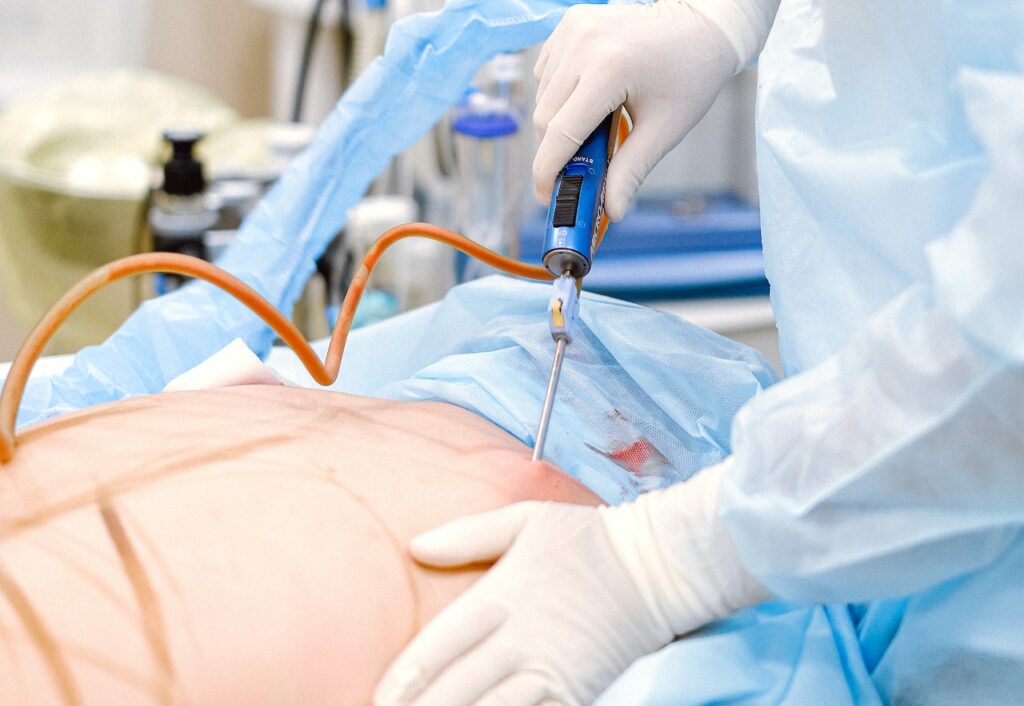Truth about Liposuction Surgery
Liposuction is the surgical removal of excess fat, offering a better contour and shape to the body. As people gain and lose weight, certain areas of the body tend to develop deposits of unwanted fat that can be difficult to get rid of through diet and exercise.
Liposuction can offer permanent removal of these fatty cells. Today, a number of new techniques, including ultrasound-assisted lipoplasty (UAL), power-assisted lipoplasty (PAL), VASER, the tumescent technique, and the super-wet technique, are helping many plastic surgeons to provide selected patients with more precise results and quicker recovery times.
Liposuction surgery can be performed on patients of any age, but the best results are seen in liposuction patients who have skin that has not lost its elasticity – i.e. the younger the skin, the better the result.
Am I a good candidate for liposuction surgery?
To be a good candidate for liposuction surgery, you should have realistic expectations about what the procedure can do for you. Most often, patients with localized fat in the following areas are good candidates for the liposuction procedure:
o Cheeks, jowls and neck 6
o Upper arms 4
o Breast or chest areas 5
o Back 7
o Abdomen and waist 1
o Hips and buttocks 2
o Inner and outer thighs 3
o Inner knee 8
o Calves and ankles 9
Liposuction surgery is not a substitute for overall weight loss, nor is it an effective treatment for cellulite, a condition that gives the skin an uneven, dimpled appearance. The liposuction procedure is intended to decrease localized fat deposits that diet and exercise cannot remove. The best results from liposuction are obtained in patients who make exercise and proper nutrition an essential part of their postoperative regimen.
Because of individual factors, such as skin elasticity and body type, not everyone will achieve the same result from liposuction surgery. People with medical conditions such as diabetes, significant heart or lung disease or poor blood circulation are also at a greater risk for complications from liposuction. Your medical condition and L surgical expectations should be discussed in full with your surgeon in order to make sure liposuction is an appropriate option for you.
How will my plastic surgeon evaluate me for ultrasonic liposuction (UAL) vs. power-assisted (PAL) vs. VASER vs. traditional liposuction (SAL)?
During your consultation for liposuction surgery, your plastic surgeon will ask you to provide a full medical history as well as an explanation of your surgical expectations. It is important that you include all medical conditions in your discussion, as well as any medications, herbal supplements and vitamins.
Your current weight and skin elasticity will be a significant factor in the evaluation of whether liposuction is right for you. Your plastic surgeon may ask you about the effects of prior weight loss on the appearance of those areas which you have indicated for contouring. He or she will assess the elasticity of your skin and estimate the amount of fat to be removed for optimal results. Depending on all of these factors, he or she will allow you which liposuction technique (UAL, PAL, VASER, SAL)is most appropriate to your case.
How Tumescent Liposuction is Performed?
Tumescent Liposuction incisions are usually less than one-quarter inch in length and are placed as inconspicuously as possible, often within skin folds or contour lines. Tumescent fluid (same with Lidocane and Epinephrine) is injected into the areas to be liposuctioned. This helps to provide analgesia down, blood loss and maintain a pain-free postoperative recovery. Liposuction is performed by first inserting a small, hollow tube, called a cannula, through one or more tiny incisions near the area to be suctioned. The cannula is connected by tubing to a vacuum pressure unit. Guided by the surgeon, the suction device literally vacuums away the unwanted fat.
What are some variations to the tumescent liposuction technique?
Fluid Injection, a technique in which a medicated solution is injected into fatty areas before the fat is removed, is commonly used by plastic surgeons today. The fluid — a mixture of intravenous salt solution, lidocaine (a local anesthetic) and epinephrine (a drug that contracts blood vessels) — helps the fat be removed more easily, reduces blood loss and provides anesthesia during and after surgery. Fluid injection also helps to reduce the amount of bruising after surgery. The fluid is called tumescent fluid.
Large volumes of fluid (sometimes as much as three times the amount of fat to be removed) are injected in the tumescent technique. Tumescent liposuction surgery, typically performed on patients who need only a local anesthetic, usually takes significantly longer than traditional liposuction (sometimes as long as 4 to 5 hours). However, because the injected fluid contains an adequate amount of anesthetic, additional anesthesia may not be necessary. The name of this technique refers to the swollen and firm or “tumesced” state of the fatty tissues when they are filled with solution.
The super-wet technique is similar to the tumescent technique, except that lesser amounts of fluid are used. Usually the amount of fluid injected is equal to the amount of fat to be removed. This technique often requires IV sedation or general anesthesia and typically takes one to two hours of surgery time.
Ultrasound-Assisted Lipoplasty (UAL). This technique requires the use of a special cannula that produces ultrasonic energy. As it passes through the areas of fat, the energy explodes the walls of the fat cells, liquefying the fat. The fat is then removed with the traditional liposuction technique.
Power-Assisted Lipoplasty (PAL).
VASER
Other options may involve the type of instrumentation used or whether suctioning is performed on the deep or more superficial layers of fat. These considerations are based in large part upon the goals that you and your plastic surgeon have set for your tumescent liposuction surgery.
Understanding Liposuction Risks
Fortunately, there is a low rate of complications from liposuction surgery. Every year, thousands of people undergo the procedure with little or no complications. Anyone considering surgery, however, should be aware of both the benefits and risks of liposuction.
Click to Reduce your Weight
I understand that every surgical procedure has risks, but how will I learn more so that I can make an informed decision?
The subject of potential complications of liposuction surgery is best discussed on a personal basis between you and your liposuction surgeon, or with a staff member in your surgeon’s office.
Some of the potential complications that may be discussed with you include bleeding, infection and reactions to anesthesia. Blood accumulations under the skin are possible, but these normally resolve themselves and rarely require removal. While numbness of the skin following liposuction is almost always temporary, it is possible for some lack of sensation to persist or for skin discoloration to appear in treated areas. Contour irregularities after liposuction surgery including depressions or wrinkling of the skin can result in some patients, but treatments are usually available to help minimize these problems if they occur.
Your Liposuction Surgical Experience
The goal of your liposuction plastic surgeon and the entire staff is to make your liposuction surgical experience as easy and comfortable for you as possible.
How should I prepare for liposuction surgery?
If you are a smoker, you will be asked to stop smoking well in advance of surgery. Smoking damages your skin cells, ultimately slowing down the healing process after liposuction surgery. Your surgeon will provide detailed information about what medications can or cannot be taken, as well as what to eat or drink the day of surgery.
You should arrange for someone to take you home from liposuction surgery, and if necessary, someone may need to stay with you for the first night.
What will the day of liposuction surgery be like?
Liposuction can be performed in an office-based facility, a surgery center or an outpatient hospital facility.
Various types of anesthesia can be used for liposuction procedures. Together, you and your surgeon will select the type of anesthesia that provides the most safe and effective level of comfort for your liposuction surgery.
If only a small amount of fat and a limited number of body sites are involved, liposuction can be performed under local anesthesia, which numbs only the affected area(s). However, some patients prefer general anesthesia, particularly if a large volume of fat is being removed. If this is the case, a nurse anesthetist or anesthesiologist will be called in to make sure you are completely asleep during the procedure.
When the procedure is completed, you will be taken into recovery where you will be closely monitored. Any discomfort will be controlled by medications, and your prescriptions can be taken at home. A compressive dressing such as an elasticized bandage, sponge or specially designed garment may have been placed over the areas that were liposuctioned. Your liposuction surgeon will tell you how long you should wear the liposuction garment and will instruct you on how to remove it so that you may shower or bathe.
You probably will be permitted to go home after a few hours, although some liposuction patients may stay overnight in the hospital or surgical facility.
How will I look initially after my liposuction procedure?
The day after liposuction surgery, you should move around a bit to promote circulation. You should restrict yourself to these movements for the first few days. Remember, you must not take aspirin or certain anti-inflammatory medications, and you should not smoke for a while following liposuction surgery.
When your dressings are removed by your liposuction surgeon, you will notice swelling and bruising, which is to be expected. Swelling usually begins to subside a week or so following liposuction surgery, while bruising can last three weeks or longer. There may also be numbness in some areas, and it may take several weeks before feeling returns. If stitches need to be removed, this is typically done within 5-7 days after liposuction surgery.
When can I resume my normal activities after Liposuction surgery?
Most liposuction patients can return to work in just a few days. In many instances, you can resume most of your normal activities within one or two weeks and begin some form of exercise soon after. Your recovery depends on the extent of your liposuction, as well as your individual condition before liposuction surgery.
Results of Your Liposuction
Liposuction surgery will reduce areas of fatty deposits, often making patients more self-confident. It is important to keep in mind, however, that factors such as fluid retention and prolonged swelling may cause a delay in the complete contour of your body. The healing process is gradual, so you should expect to wait a while before fully enjoying the results of your liposuction.
How long will the results last after Liposuction surgery?
The results of liposuction are permanent if you continue to remain at your postoperative weight. Even if you gain a few extra pounds, you may find that the weight is distributed more evenly instead of accumulating in the areas that were problematic for you in the past. The best results after liposuction are obtained in patients who are motivated and exercise regularly and follow proper nutritional advice.
Post Surgical Care after Liposuction surgery
Liposuction recovery can be enhanced and results can be maintained with the use of certain clinical skin care products. Dr. Speron recommends neaclear Liquid Oxygen Firming Body Lotion, which utilizes the power of oxygen, Vitamins C & E and nutrients to smooth and firm the skin.




